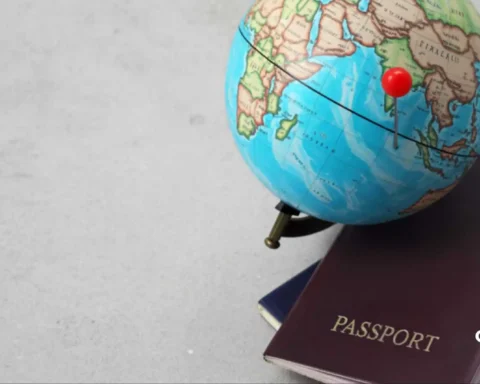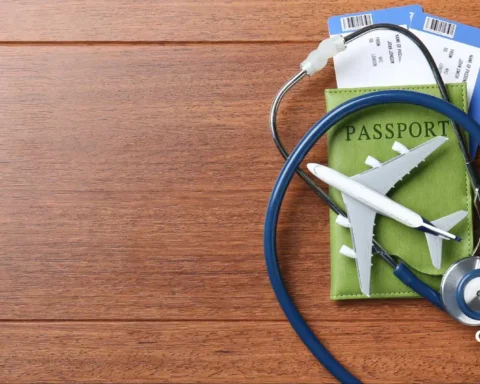Cambodia is a country strategically well-positioned within Southeast Asia. Having a port with access to the Gulf of Thailand grants the country a major foothold in international trade. In 2022, Cambodia’s exports were estimated to be around $ 18 billion, and imports were about $ 20 billion. The export growth was primarily driven by garment products, footwear, and agricultural commodities like rice and rubber. Key export markets included the United States, Vietnam, Japan, Germany, and the United Kingdom. On the import side, major sources included China, Thailand, Vietnam, Singapore, and Hong Kong.
This geographic location, as well as the business operations, are fertile grounds for the operations of small and medium enterprises (SMEs). In this article, we will provide a comprehensive guide to import and export in Cambodia, as well as highlight the unique procedures required to ship imported goods through the country on transit clearance.
Table of Contents
Guide to Import and Export in Cambodia: Registration of Trade SMEs in Cambodia
Before engaging in trade activities, companies and enterprises must register with a variety of government and financial institutions, chiefly Cambodia’s Department of Business Registration, under the Ministry of Commerce.
The registration guide to import and export in Cambodia is a very tenuous one, involving a multitude of key steps.
Cambodia employs the Automated System for Customs Data (ASYCUDA), a platform created as part of the United Nations Conference on Trade and Development initiative. To register with ASYCUDA, importers and exporters require a Taxpayer Identification Number (TIN). To acquire a TIN, importers and exporters must register with the General Department of Taxation under the Ministry of Economy and Finance in Phnom Penh.
Additionally, importers and exporters need to register with the General Department of Customs and Excise. Subsequently, importers and exporters need to register their value-added tax (VAT) accounts with the General Department of Taxation (Ministry of Economy and Finance). Under the Ministry of Economy and Finance. For those operating within Special Economic Zones (SEZs), it is essential to apply to the Free Zone Management Department of the General Department of Customs and Excise in Phnom Penh.

Required Documents for Importers and Exporters
There are several documents that are required for importing and exporting goods in and out of Cambodia. The provision of these and any other additional documentation to customs officials is imperative.
List of Documents Required for Importers
- Customs Import Declaration;
- Commercial Invoice;
- Packing List;
- Road Transport Document (if arriving by land);
- Bill of Lading (if arriving by sea);
- Import Permit;
- Insurance Certificate;
- Tax Certificate;
- Certificate of Origin
- Company Registration.
List of Documents Required by Exporters
- Customs Export Declaration;
- Commercial Invoice;
- Packing List;
- Road Transport Document (if departing by land);
- Bill of Lading (if departing by sea);
- Terminal Handling Receipts (if departing by sea);
- Insurance Certificate;
- Export Permit
- Certificate of Origin.
Additional Documents Guide to Imports and Exports in Cambodia
For certain articles that are to be imported and exported in and out of Cambodia, there is a requirement for additional documents and permits from relevant government agencies.
For instance, when it comes to food and raw materials, electronic equipment, chemicals, agricultural equipment, and drugs intended for import are subject to assessment by Camcontrol. This assessment is very important, as, without it, goods cannot be cleared to enter Cambodia.
For animals dead or alive, raw materials from animals, as well as animal by-products, require permission from the Ministry of Agriculture, Forestry, and Fisheries. All plants and plant products require a phytosanitary certificate issued by the Ministry of Agriculture, Forestry, and Fisheries. A complete list of import and export goods with proper HS Codes, a breakdown of tariff rates, and additional measures can be found on the Cambodian National Trade Reposition Website.
For Goods in Transit
For those who aim to take advantage of Cambodia’s geographic location to transit their goods to a subsequent location, there are rules for transferring goods. Goods which go through Cambodia en route to subsequent destinations must provide an import declaration under Cambodia’s transit regime (under the General Department of Customs and Excise).
To transit goods through Cambodia, the following documents are necessary:
- Commercial Invoice;
- Packing list;
- Certificate of Insurance; and
- Certificate of Origin.
Transitory goods do not incur import tariffs. But, either a check or a letter of guarantee issued by a financial institution must be provided as security. Goods in transit must follow the route through Cambodia dictated by customs officials.
Tariffs and Free Trade Agreements
There are several trade agreements, customs procedures, customs regulations, as well as tariffs for import and export activities. Cambodia follows the 8-digit Harmonized System Code under the World Customs Organization (WCO). Cambodia’s tariff classifications conform to the Association of Southeast Asian Nations (ASEAN) Harmonized Tariff Nomenclature (AHTN).
For Importers
Cambodia applies tariff rates between 0 and 35 percent. Typically, primary goods and raw materials incur a tariff rate of 7 percent; capital goods and locally available raw materials have a tariff rate of 15 percent, while finished products, as well as alcohol, petroleum, vehicles, and precious metals, have a tariff rate of 35 percent.
For a complete good-by-good breakdown of tariff rates, visit the website of the Cambodia National Trade Repository. Goods such as agricultural equipment, school materials, pharmaceutical products, and sports equipment are exempt from import tariffs. Cambodia charges a flat 10 percent value-added tax (VAT) on all imported goods. Cambodia also charges a special tax on certain imported goods.
For Exporters
Cambodia levies an export tax on goods leaving the country, which ranges between 0 and 50 percent.
Special Economic Zones (SEZs)
Cambodia has established 14 SEZs to date, including one at the port of Sihanoukville. Businesses operating out of these SEZs can import raw materials and production equipment without paying import duties and are exempt from VAT on both imports and exports. As mentioned above, importers and exporters operating in SEZs require additional documentation.
Conclusion
Navigating the guide to import and export in Cambodia presents both challenges and opportunities for small and medium enterprises. Understanding the necessary regulatory environment, from the complexities of required documentation to tax incentives, is more than crucial in advancing one’s business operations.
By thoroughly understanding and effectively leveraging Cambodia’s trade regulations, tax incentives, and strategic partnerships through free trade agreements, SMEs can significantly enhance their operational efficiency and market reach. Businesses need to remain informed about legislative changes, market trends, and the broader economic landscape to successfully navigate the import and export framework in Cambodia. Engaging in ongoing education, seeking professional guidance when necessary, and employing innovative strategies will help businesses effectively manage risks while maximizing their trade potential. As Cambodia continues to grow as a dynamic hub for trade in Southeast Asia, businesses equipped with the right knowledge and resources will be well-positioned to capitalize on emerging opportunities in both the domestic and international markets.

FAQs
What things does Cambodia import?
The top three imported commodities in Cambodia are mineral fuels, oils, distillation products, knitted or crocheted fabrics and electrical and electronic equipment.
How much are import fees in Cambodia?
Tariffs on imports to Cambodia are generally applied ad valorem duties, which principally consist of the following four rates: 0%, 7%, 15% and 35%, while a selection method choosing either ad valorem duty or specific duty is applied for some imported goods.
Who are Cambodia’s major trading partners?
Cambodia’s major trading partner countries for exports are the United States, China, Japan, Canada, and Germany. For imports, the major trading partners are China, Singapore, Thailand, and Vietnam.









